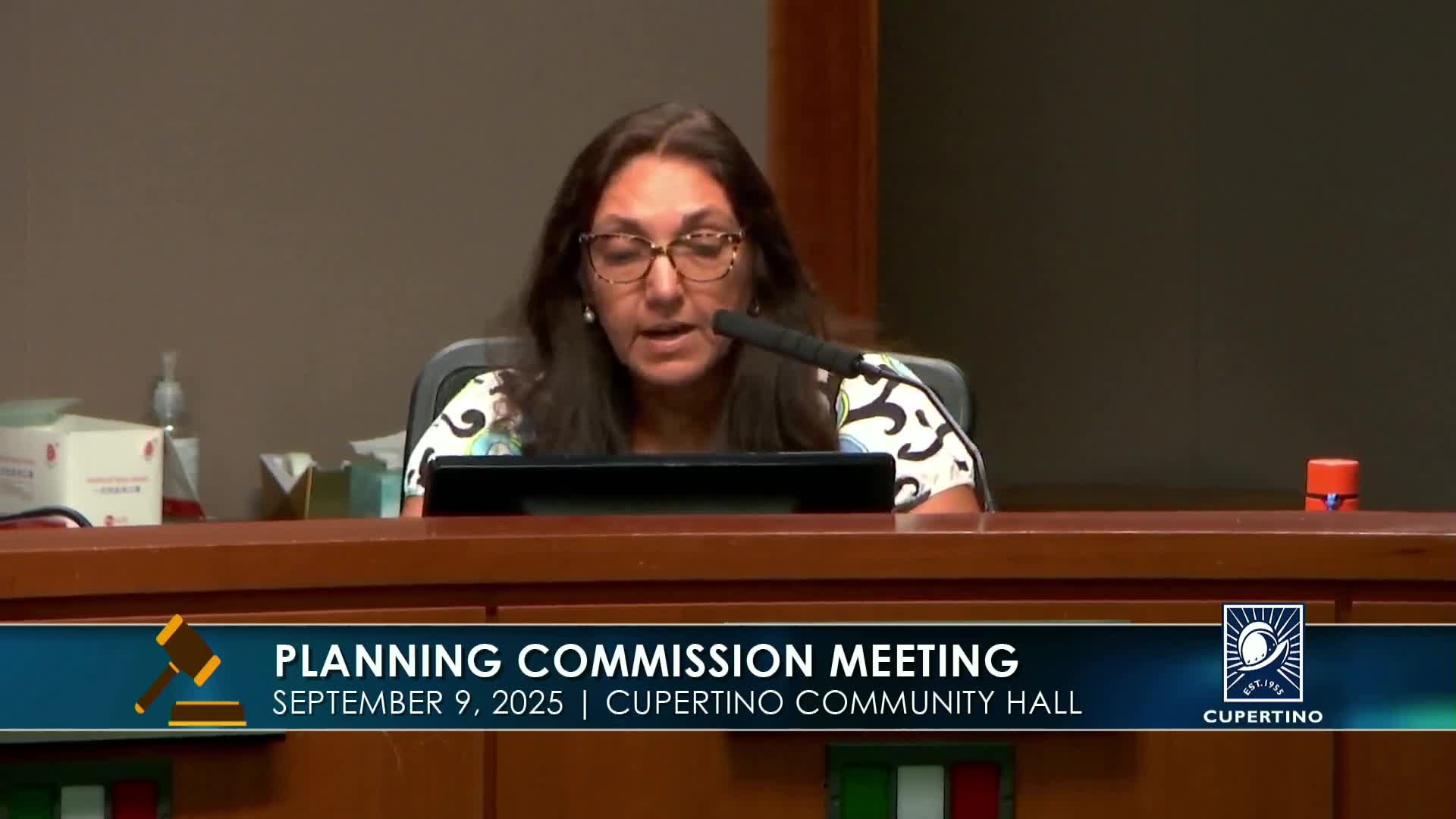Cupertino Commissioners Propose Safety Enhancements for High Injury Traffic Intersections
September 10, 2025 | Cupertino, Santa Clara County, California
This article was created by AI summarizing key points discussed. AI makes mistakes, so for full details and context, please refer to the video of the full meeting. Please report any errors so we can fix them. Report an error »

In the heart of Cupertino's city hall, the Planning Commission convened on September 9, 2025, to discuss pressing issues that affect the community's infrastructure and safety. As the meeting unfolded, a palpable sense of urgency emerged, particularly around the need for improved transportation safety measures and community engagement.
Commissioners voiced concerns about the effectiveness of current public input methods, particularly surveys that may exclude vulnerable populations, such as seniors who may not be tech-savvy or engaged in the process. One commissioner highlighted the importance of ensuring that all voices are heard, emphasizing the need for broader consensus on community projects, especially those related to shared use paths and safety improvements.
The discussion turned to the city’s high injury network, where commissioners expressed a desire for a more nuanced approach to pedestrian and cyclist safety. Suggestions included the implementation of technology to address issues like stop sign running, with a focus on targeted enforcement in areas with known problems. The idea of using visual aids, such as flags at school intersections, was also proposed as a potential solution to enhance safety.
As the meeting progressed, the commissioners began to formulate a motion aimed at enhancing safety at high-risk intersections. This included the potential use of red light cameras and speeding cameras, although the feasibility of such measures was acknowledged to depend on future legislative changes. The conversation underscored a commitment to balancing infrastructure improvements with community needs, particularly regarding the impact on parking and traffic flow.
In a bid to streamline the decision-making process, one commissioner suggested simplifying the prioritization criteria for projects, advocating for a focus on connectivity and accessibility for all residents, especially seniors. The proposal aimed to ensure that infrastructure developments not only enhance safety but also promote active transportation options for the community.
As the meeting drew to a close, the commissioners expressed a collective determination to refine their recommendations and return with a clearer plan that reflects the community's priorities. The discussions highlighted a critical moment for Cupertino, as the Planning Commission seeks to navigate the complexities of urban development while fostering an inclusive environment for all residents. The outcomes of this meeting could shape the future of transportation safety and community engagement in Cupertino, setting a precedent for how local governance can adapt to the needs of its citizens.
Commissioners voiced concerns about the effectiveness of current public input methods, particularly surveys that may exclude vulnerable populations, such as seniors who may not be tech-savvy or engaged in the process. One commissioner highlighted the importance of ensuring that all voices are heard, emphasizing the need for broader consensus on community projects, especially those related to shared use paths and safety improvements.
The discussion turned to the city’s high injury network, where commissioners expressed a desire for a more nuanced approach to pedestrian and cyclist safety. Suggestions included the implementation of technology to address issues like stop sign running, with a focus on targeted enforcement in areas with known problems. The idea of using visual aids, such as flags at school intersections, was also proposed as a potential solution to enhance safety.
As the meeting progressed, the commissioners began to formulate a motion aimed at enhancing safety at high-risk intersections. This included the potential use of red light cameras and speeding cameras, although the feasibility of such measures was acknowledged to depend on future legislative changes. The conversation underscored a commitment to balancing infrastructure improvements with community needs, particularly regarding the impact on parking and traffic flow.
In a bid to streamline the decision-making process, one commissioner suggested simplifying the prioritization criteria for projects, advocating for a focus on connectivity and accessibility for all residents, especially seniors. The proposal aimed to ensure that infrastructure developments not only enhance safety but also promote active transportation options for the community.
As the meeting drew to a close, the commissioners expressed a collective determination to refine their recommendations and return with a clearer plan that reflects the community's priorities. The discussions highlighted a critical moment for Cupertino, as the Planning Commission seeks to navigate the complexities of urban development while fostering an inclusive environment for all residents. The outcomes of this meeting could shape the future of transportation safety and community engagement in Cupertino, setting a precedent for how local governance can adapt to the needs of its citizens.
View full meeting
This article is based on a recent meeting—watch the full video and explore the complete transcript for deeper insights into the discussion.
View full meeting
